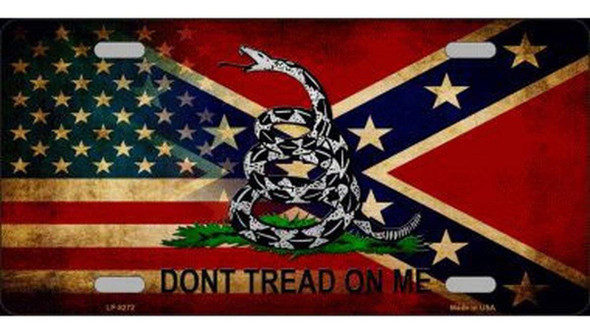Author: Nathaniel Slattery
Posted: Month of the Immaculate Conception, 17th Day, Year of Our Lord 2022

This is a continuation of a scholarly work on American History from a Catholic perspective, by a local lecturer at Appalachian State University, who I have the honor of assisting to write it. It is the first part of chapter one. If you would like to read the previous portion, which is the introduction, it can be found easily at the bottom of this page.
Where I live, on the rural mountain highway between my home and my place of business, there is a house. This house has a fence made partly of wood and partly of chain-link (whatever they had available). The home itself has good, well-maintained paint and decoration. I don’t mean to suggest that it is an ugly home, or improperly kept. Rather, it is in many ways beautiful, particularly the structure, which was built not long ago and purchased perhaps three or four people removed from the original builder. But the yard is full of the fence, goats within the fence, a chicken coop not far, and a garden for vegetables and a garden for flowers, all sort of cobbled together wherever they would fit. The home, in short, is free and modern.
There are three flags that rise above the home amongst which no doubt the owners see no contradiction or conflict. The first is the Confederate Flag, crossed and barbed, of the American Civil War of 1861-1865, with a death toll of one million, where the country erupted into more violence and bloodshed than ever before or since entirely because of a dispute over economic philosophy as it relates to freedom. The second is the United States flag, striped and starred, which represented the North in that conflict but, in the American War of Independence of 1775-1781, it represented the entire country in a political rebellion with economic motives against an at least nominally Christian monarchy for the establishment of a secular republic.[i] The third flag is the Snake, with the quote “Don’t Tread On Me” below.
Today, the third flag in all its myriad applications and locations can only represent a warning to all authority, whether it be the federal government, the state government, the mayor, the local DMV employee, the Church, the Pope, the Bishop, a priest, law, or another man with a larger gun. Because if the other man with the larger gun tries to tread on me, we both will end up with a bullet, and the caliber of his won’t decrease the caliber of mine. It is not uncommon to see the Snake with a rainbow background.
In 1775, the Snake alwayshad a yellow background, and it represented a warning to the monarch not to tread on the rights of his subjects, whether they be near or far, because they’re armed. Hence why it was the flag of the first Marines to attack Britain in the war. It probably was related to the political cartoon of Benjamin Franklin showing a snake divided in pieces, each of the pieces named after a colony, with the motto “Join or Die” in 1754, just before the outbreak of the French and Indian War between France and Great Britain. Before the war, Colonists like Franklin begged for imperial intervention to protect their lives, fortunes, and “sacred Honor”[ii] against the depredations of the French and their Native American allies. By 1776, the Snake was coiled and ready to fang the hand that had defended it twenty-two years earlier.
Benjamin Franklin is one of the most famous “Founding Fathers” of the American Individualist nation, and also a significant figure in the Enlightenment era of philosophy. He was baptized as an infant on January 17, 1706 into the Congregationalist denomination at the Old South Meeting House in Boston, which “made history in 2004, the year Massachusetts became the first state to legalize gay marriage, when it was the first Christian church in the city to officiate a legal same-sex wedding.”[iii] He died a Deist, a Provincial Grand Master of Freemasonry,[iv] denying the divine nature of Christ.
The Congregationalist denomination that laid such rich soil for the serpentine growth of Franklin’s interior life, came to the United States with the English Puritans of New England. In England, they were called Separatists or Independents, and they were one of many Protestant sects that fought with England, with Catholics, with Anglicans, with other Protestants, and presumably with anyone else that gave them an excuse, during that tumultuous time of English history, immediately following the Protestant reformation. Like all other denominations, they grew out of separation from the Catholic Church, but in a distinctly English fashion, they also separated from the other separatists.
Point being, the long train of American Individualism and the Snake began its journey in England, at the time of the Protestant Reformation, and mired in rivers of blood both red and blue.
[i] See Joseph S. Moore’s Founding Sins: How a Group of Antislavery Radicals Fought to Put Christ into the Constitution (Oxford and New York: Oxford University Press, 2016), 6.
[ii] Cf. the last line of the Declaration of Independence when the rebellious colonists pledged to each other their “Lives,. . .Fortunes, and . . .sacred Honor.”
[iii] See Spencer Buell, “On its 350th Birthday, 10 Things You Didn’t Know About Boston’s Old South Church,” Boston Magazine, 10 May 2019 [online]: https://www.bostonmagazine. com/news/2019/05/10/old-south- church-350/, accessed 12 August 2022.
[iv] See “Benjamin Franklin: Freemason and Founding Father,” The Grand Lodge of Ohio: Free and Accepted Masons, https://www.freemason.com/ benjamin-franklin-freemason- founding-father/, accessed 12 August 2022.

